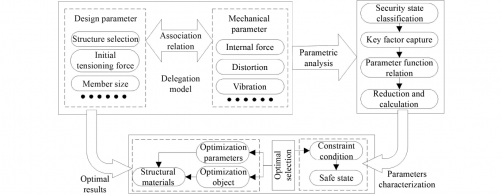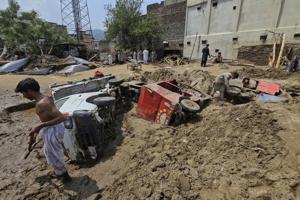Flash floods in the northwestern region of Pakistan have resulted in a tragic death toll of 274 individuals, with rescue operations still ongoing. The devastating floods struck Buner district in Khyber Pakhtunkhwa province following torrential rains and cloudbursts that began on June 26, 2023. Emergency services reported that dozens of bodies were recovered from the rubble of collapsed houses, with numerous villagers still unaccounted for.
In a press briefing, Mohammad Suhail, a spokesman for the emergency service, confirmed that search efforts are concentrated on the most affected areas, where entire homes were swept away. Officials have faced criticism for their response to the disaster, particularly regarding the lack of timely evacuation warnings for residents. Locals stated that traditional warning methods, such as announcements from mosque loudspeakers, were not utilized, leaving many unprepared for the sudden onset of the floods.
Lt. Gen. Inam Haider, chairman of the National Disaster Management Authority, defended the government’s actions during a hastily arranged news conference. He noted that the region is experiencing shifting weather patterns attributed to climate change, which have made forecasting increasingly difficult. He emphasized that rainfall this monsoon season has exceeded last year’s levels by 50%, and further heavy rains are anticipated, posing ongoing risks.
Asfandyar Khan Khattak, director-general of the Provincial Disaster Management Authority, acknowledged the challenges of predicting cloudbursts, stating, “There is no forecasting system anywhere in the world that can pinpoint the exact time and location of a cloudburst.” This statement highlights the limitations of existing technology in addressing the impacts of climate-related disasters.
Survivors have reported harrowing accounts of loss. In one instance, Umar Khan described how his family was caught in the floodwaters on the eve of a wedding, resulting in the deaths of 24 family members. He managed to escape but is now searching for four missing relatives. “If people had been informed earlier, lives could have been saved,” he lamented.
Authorities in Buner confirmed that more than half of the damaged roads had reopened by Sunday, enabling the delivery of aid and heavy machinery to remote areas. Rescue crews are working tirelessly to clear debris and locate those still missing.
The situation remains precarious, as additional rainfall and potential landslides are forecasted. Local administrations have been urged to remain vigilant as more severe weather patterns are expected throughout the month.
Pakistan has a history of vulnerability to climate-induced disasters, with record-breaking monsoon rains in 2022 resulting in nearly 1,700 deaths and widespread destruction. The current monsoon season, which lasts from June to September, particularly affects the mountainous regions where villages are often situated on steep slopes prone to flooding.
Khalid Khan, a weather expert, pointed out that despite contributing less than 1% of global greenhouse gas emissions, Pakistan faces extreme weather events that devastate communities. He stressed the urgent need for international support and action to mitigate the effects of climate change in the region.
As rescue efforts continue in both Pakistan and the Indian-controlled Kashmir region, where additional flash floods have claimed at least seven lives, the focus remains on saving those still unaccounted for and addressing the growing humanitarian crisis.








































































